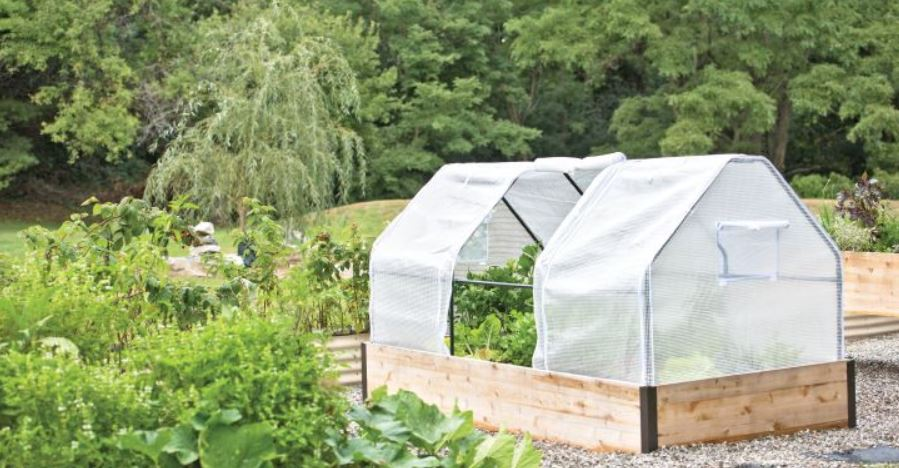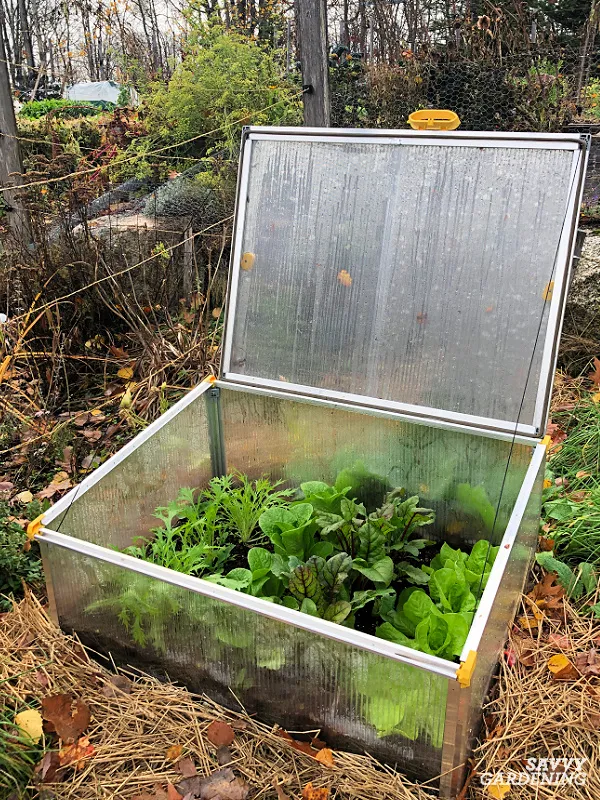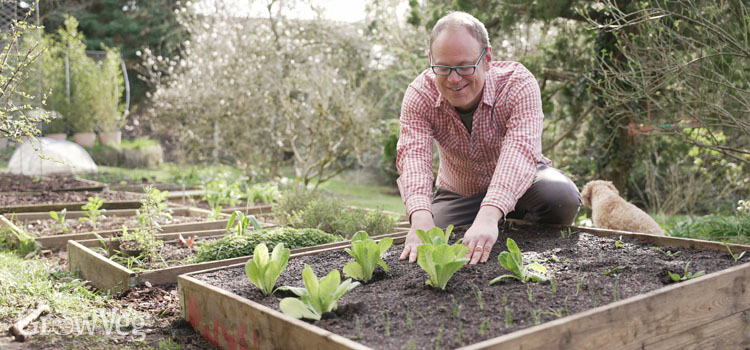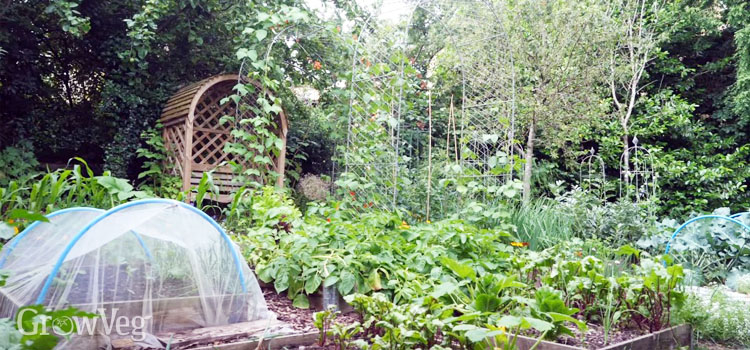By Barbara Pleasant | 11 January 2024
A well-crafted garden plan is like a favorite recipe—simple to adjust and rewarding to implement. Adapted from my book, Starter Vegetable Gardens, this revised Extra Early Spring Garden plan is designed to produce fresh salad greens—and much more—before the last frost of the season!
This plan requires less than 150 square feet (14 square meters) across three garden beds. By leveraging cold frames, tunnels, and cloches, you can extend the growing season, warming the soil and protecting young plants from frost, hail, wind, and animals. Grouping plantings by season also simplifies tasks like thinning, weeding, and watering.
Your Extra Early Spring Garden Plan
Get a Head Start—Up to 8 Weeks Before Your Last Frost
With season-extending covers like cold frames and cloches, you can sow seeds earlier than usual—up to eight weeks before your region’s last frost date. Here’s how:
- Select Season-Extending Tools
In the Garden Planner, navigate to the Garden Objects section, where you’ll find tools like raised bed covers, wooden cold frames, and plastic cloches. These can be scaled to fit your space. Ensure your covers fully protect the plants, including the corner handles on plant icons in your plan. - Adjust Frost Dates
Adding covers automatically moves your frost date forward by two to three weeks, depending on the type of cover. This adjustment can be refined in your plan settings. However, plants still require longer daylight hours and warmer soil to thrive, so aim to start planting no more than eight weeks before the last frost.

Garden Beds Breakdown
Bed 1: Cold-Hardy Greens
- When to Plant: 6–8 weeks before the last frost
- What to Grow: Mâche (corn salad), cress, leaf lettuce, and miner’s lettuce
- How to Protect: Use glass-topped cold frames made from old windows or shower doors. These hold up well against ice and snow, offering the best protection for early planting. As seedlings grow, graduate them to row cover tunnels, reusing the cold frame for new sowings like spinach, arugula, and additional lettuce.
Bed 2: Early Roots and Kale
- When to Plant: 4–6 weeks before the last frost
- What to Grow: Kale, green onions, radicchio (seedlings), carrots, and radishes (direct sow)
- How to Protect: Set up row cover tunnels. For extra frost protection, add plastic sheeting or insulating blankets. Secure the edges with boards for easy access during thinning and weeding.

Bed 3: Big Spring Crops
- When to Plant: 3–4 weeks before the last frost
- What to Grow: Swiss chard, bulb fennel, broccoli, kohlrabi, parsley, pansies, scallions, and calendulas
- How to Protect: Use individual cloches to shield seedlings from wind and animals. These larger crops need wider spacing, making cloches an ideal solution.
Enjoying the Fruits of Early Planting
Your Extra Early Spring Garden will begin delivering results quickly, with salad greens ready to harvest soon after planting the third bed. Production will continue into early summer, creating a seamless transition for warm-weather crops like beans, squash, and sweet potatoes.

With a little preparation and season-extending tools, you’ll enjoy fresh, homegrown vegetables weeks ahead of schedule—turning those chilly early spring days into a productive and rewarding start to the gardening year.
